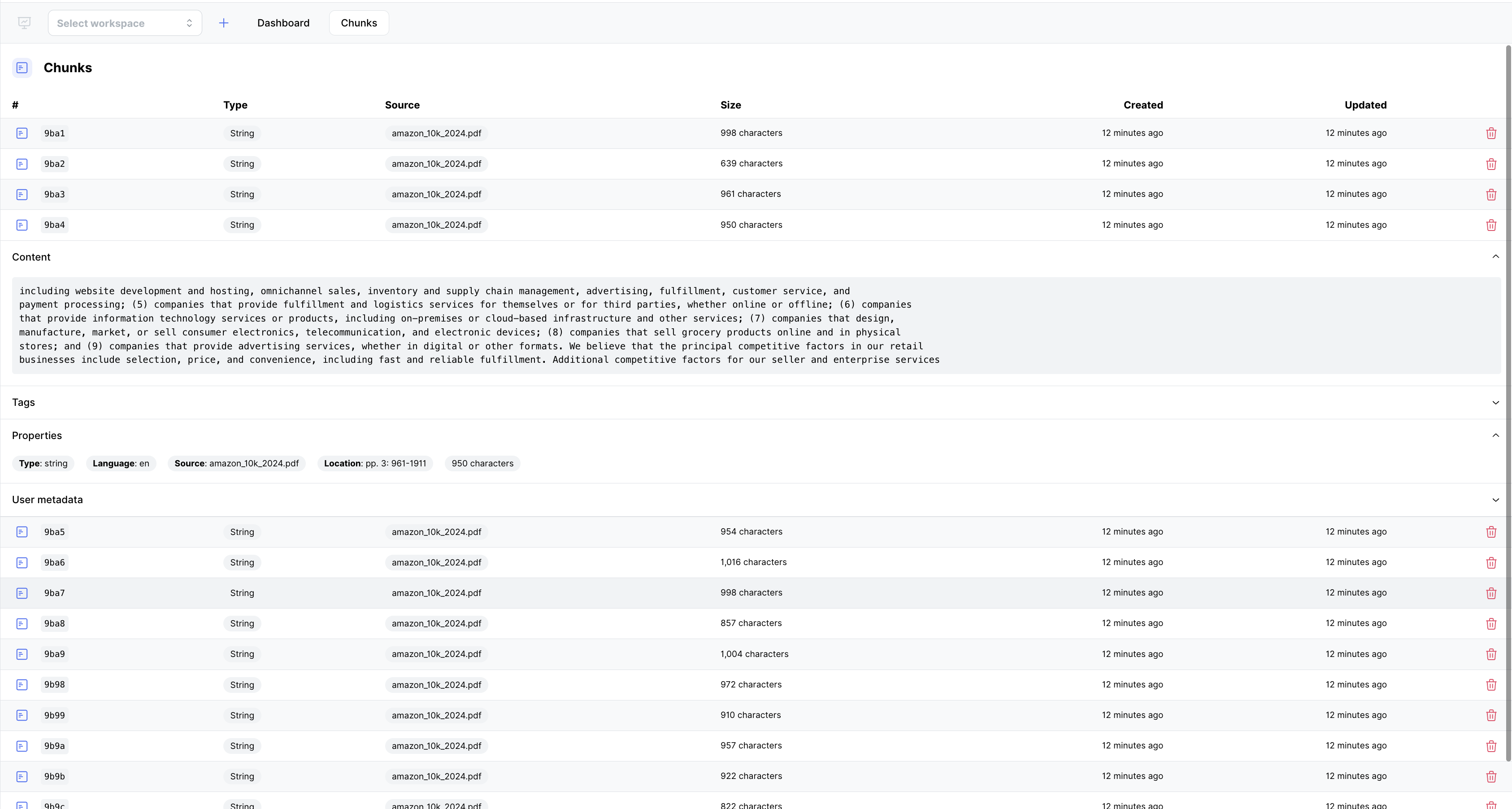Chunk
In the context of the whyhow platform, a chunk refers to a unit of text extracted from your uploaded documents during the graph creation process. Chunks are an essential concept in understanding how whyhow processes and analyzes your data to build a knowledge graph.
What is a Chunk?
When you upload a document to whyhow, the platform breaks down the content into smaller, more manageable pieces called chunks. A chunk typically represents a coherent unit of information, such as a paragraph, a sentence, or a phrase, depending on the nature of your data and the desired granularity.

Why are Chunks Important?
Chunks serve several important purposes in the graph creation process:
-
Entity Extraction: By breaking down your documents into chunks, whyhow can more easily identify and extract entities (such as people, places, organizations, or concepts) mentioned within each chunk. This allows for more accurate and fine-grained entity recognition.
-
Relationship Extraction: Chunks provide a localized context for identifying relationships between entities. By analyzing the co-occurrence and proximity of entities within a chunk, whyhow can infer potential relationships and create edges in the knowledge graph.
-
Scalability: Processing large documents can be computationally expensive. By dividing the text into chunks, whyhow can parallelize the processing and handle larger datasets more efficiently.
-
Granular Analysis: Chunks enable a more granular analysis of your data. You can explore and query the knowledge graph at the chunk level, allowing for more targeted and specific insights.